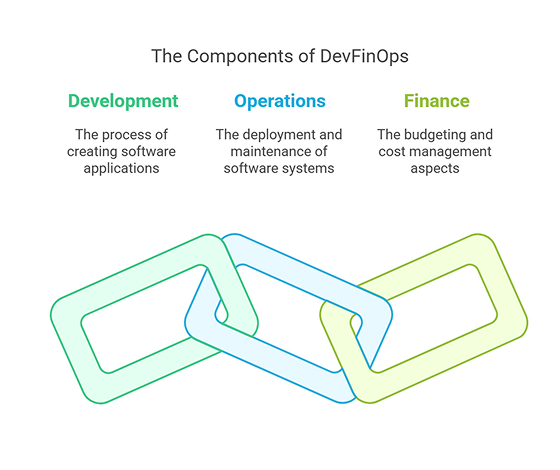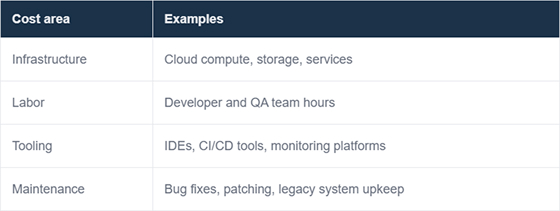As software becomes a core part of business operations, it’s no longer enough to focus only on development and operations. Finance also plays a key role in how products are planned, built, and maintained. This is where DevFinOps comes in.
DevFinOps integrates financial thinking into software delivery processes. It extends traditional DevOps by including financial visibility and helps teams track, plan, and optimize costs across the software lifecycle.

What DevFinOps Means in Practice
DevFinOps takes ideas from both DevOps and FinOps and expands them. Instead of looking only at cloud cost, it includes the broader picture, especially labor and tooling costs that often go untracked.
- Beyond cloud expenses: Cloud cost management is just one part of the equation. DevFinOps considers all costs tied to software, including developer time, licenses, infrastructure, and support.
- Integrated financial planning: Teams can include budget constraints and financial goals directly into sprint planning and product roadmaps.
- Software R&D capitalization: Certain development activities may qualify as capital investments rather than operating expenses. This helps finance teams manage budgets more accurately.
- People-focused cost tracking: In most organizations, the biggest expense is the engineering team. DevFinOps tracks how people’s time is spent and how that maps to product outcomes.
Why DevFinOps Is Gaining Attention
With increasing pressure to deliver value efficiently, companies are moving away from uncontrolled expenditure. DevFinOps promotes more disciplined, collaborative decision-making across teams. Benefits include:
- Improved cost transparency: Teams can calculate the actual cost of features, releases, or technical debt maintenance.
- Better resource allocation: Knowing where time and money are spent helps prioritize the most valuable work.
- Supports engineering allocation: Connects financial goals with developer effort and team planning.
Common Blind Spots in Software Costs
Many teams measure cloud costs but overlook other important areas. Below is a basic breakdown of hidden expenses:

DevFinOps provides visibility into costs and links them directly to business outcomes, enabling teams to make more informed and value-driven decisions.
Comparing DevFinOps with Other Practices
There are many related frameworks in the software lifecycle. Here’s how DevFinOps fits in:
- FinOps vs. DevOps: FinOps focuses on optimizing cloud spend. DevOps improves speed and stability. DevFinOps merges financial insights into the DevOps workflow.
- SecOps vs. DevOps: SecOps is security and operations working together. DevFinOps focuses instead on financial considerations.
- DevOps vs. DataOps: DataOps improves data pipeline reliability. DevFinOps tracks the cost and resource use behind those systems.
How DevFinOps Improves Strategic Planning
Financial data can help guide product and engineering decisions. DevFinOps provides a more complete view of:
- Which features are delivering value relative to their cost.
- Which projects are worth maintaining or terminating.
- How current spending aligns with business goals.
- What budget to allocate for future development.
It also supports software capitalization , delivery tracking , and resource planning , making financial reporting more accurate and actionable.
How DevFinOps Supports Long-Term Decisions
DevFinOps is not just about saving money today; it’s about improving how teams think about investment and sustainability.
Examples of its long-term value:
- Helps decide when to retire or continue legacy systems.
- Enables better staffing decisions by tracking time vs. output.
- Improves forecasting by analyzing past project costs.
- Supports more confident planning and trade-off discussions.
These insights become part of strategic product and financial planning, especially when integrated into engineering management platforms or software delivery management systems.
Wrapping Up
DevFinOps gives engineering and finance teams a shared framework to manage resources, track outcomes, and guide planning. By embedding financial insight into the software lifecycle, organizations can build more responsibly and make better decisions over time.
It encourages teams to move from reactive budgeting to proactive cost awareness. As a result, both short-term execution and long-term strategy benefit from greater clarity and control.
